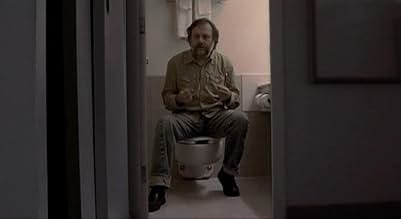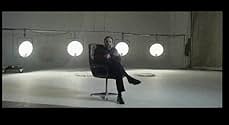The Pervert's Guide to Cinema
- 2006
- 2h 30m
ÉVALUATION IMDb
7,8/10
7,5 k
MA NOTE
Ajouter une intrigue dans votre langueSlavoj Zizek examines famous films in a philosophical and a psychoanalytic context.Slavoj Zizek examines famous films in a philosophical and a psychoanalytic context.Slavoj Zizek examines famous films in a philosophical and a psychoanalytic context.
- Director
- Writer
- Star
- Prix
- 1 nomination au total
Histoire
Le saviez-vous
- Citations
[last lines]
Slavoj Zizek: In order to understand today's world, we need cinema, literally. It's only in cinema that we get that crucial dimension which we are not ready to confront in our reality. If you are looking for what is in reality more real that reality itself, look into the cinematic fiction.
- ConnexionsFeatures Les lumières de la ville (1931)
Commentaire en vedette
"Cinema is the ultimate pervert art. It doesn't give you what you desire; it tells you how to desire."
So begins "The Pervert's Guide to Cinema," in which Slovenian philosopher and psychoanalyst Slavoj Zizek applies his Freudian/Lacanian brain-scalpel to world cinema. This film in three parts is the second feature documentary directed by Sophie Fiennes (yes, sister of Ralph and Joseph), and it is a notable accomplishment, clocking in at 2 1/2 hours of talk from one man and yet remaining humorous and engaging throughout. In essence, it is an extended film lecture, and one of the best you may ever get. Over the course of the film, Zizek guides us through a catalog of obsession and desire in film history. He touches on more than 40 films and, in particular, spends a great deal of time with Hitchcock, Lynch, Chaplin, Tarkovsky, the Marx Brothers, and Eisenstein. But he also takes a close look at "Persona," "The Conversation," "Three Colors: Blue," "Dogville," "Fight Club," and "The Exorcist." Thematically, Zizek's inquiry into cinema ranges from thoughts on the death drive to the "coordinates of desire," and from Gnosticism to "partial objects."
"The Pervert's Guide" will be a slightly better experience if you've taken a few minutes to bone up on your basic Freudian terminology. However, even if you're not steeped in psychoanalytic theory, Zizek's dynamic and hilarious personality carries the film forward with such gusto that you aren't likely to balk at the specialized lingo. The film frequently cuts from movie clips to images of Zizek *inside* the movie he is talking about--that is, in the original locations and sets. The transitions in these sequences sustain such tension and humor that the trick never gets old. And Zizek himself is constantly making us laugh, either from bizarre little jokes or from his enthusiastic insistence on, for example, a bold Oedipal interpretation of "The Birds." And this go-ahead-and-laugh attitude, on the parts of both Fiennes and Zizek, is essential to the gonzo character of the film. It is the spoonful of sugar that helps us digest Zizek's weird medicine. After all, don't we all have a sense that, past a certain point, psychology theorists are just pulling our legs?
So begins "The Pervert's Guide to Cinema," in which Slovenian philosopher and psychoanalyst Slavoj Zizek applies his Freudian/Lacanian brain-scalpel to world cinema. This film in three parts is the second feature documentary directed by Sophie Fiennes (yes, sister of Ralph and Joseph), and it is a notable accomplishment, clocking in at 2 1/2 hours of talk from one man and yet remaining humorous and engaging throughout. In essence, it is an extended film lecture, and one of the best you may ever get. Over the course of the film, Zizek guides us through a catalog of obsession and desire in film history. He touches on more than 40 films and, in particular, spends a great deal of time with Hitchcock, Lynch, Chaplin, Tarkovsky, the Marx Brothers, and Eisenstein. But he also takes a close look at "Persona," "The Conversation," "Three Colors: Blue," "Dogville," "Fight Club," and "The Exorcist." Thematically, Zizek's inquiry into cinema ranges from thoughts on the death drive to the "coordinates of desire," and from Gnosticism to "partial objects."
"The Pervert's Guide" will be a slightly better experience if you've taken a few minutes to bone up on your basic Freudian terminology. However, even if you're not steeped in psychoanalytic theory, Zizek's dynamic and hilarious personality carries the film forward with such gusto that you aren't likely to balk at the specialized lingo. The film frequently cuts from movie clips to images of Zizek *inside* the movie he is talking about--that is, in the original locations and sets. The transitions in these sequences sustain such tension and humor that the trick never gets old. And Zizek himself is constantly making us laugh, either from bizarre little jokes or from his enthusiastic insistence on, for example, a bold Oedipal interpretation of "The Birds." And this go-ahead-and-laugh attitude, on the parts of both Fiennes and Zizek, is essential to the gonzo character of the film. It is the spoonful of sugar that helps us digest Zizek's weird medicine. After all, don't we all have a sense that, past a certain point, psychology theorists are just pulling our legs?
- awalter1
- 4 mars 2010
- Lien permanent
Meilleurs choix
Connectez-vous pour évaluer et surveiller les recommandations personnalisées
Détails
- Date de sortie
- Pays d’origine
- Sites officiels
- Langue
- Aussi connu sous le nom de
- Manual de cine para pervertidos
- Lieux de tournage
- sociétés de production
- Consultez plus de crédits d'entreprise sur IMDbPro
Box-office
- Brut – à l'échelle mondiale
- 9 633 $ US
- Durée2 heures 30 minutes
- Couleur
- Rapport de forme
- 1.78 : 1
Contribuer à cette page
Suggérer une modification ou ajouter du contenu manquant

Lacune principale
By what name was The Pervert's Guide to Cinema (2006) officially released in India in English?
Répondre




















